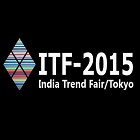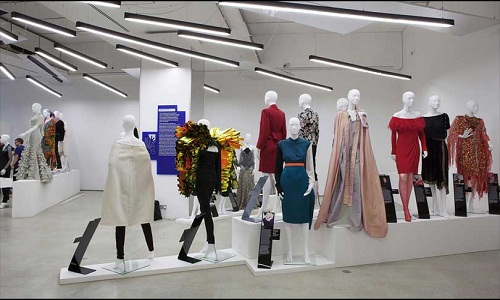FW
"Despite an economic downturn, there has been a growing demand for fashion accessories in Europe. As per a market report by the Center for the Promotion of Imports from Developing Countries (CBI).Europe represents an attractive destination market for exporters of fashion accessories from developing countries. Fashion accessories have performed well in the European market, even during the economic crisis."
 Despite an economic downturn, there has been a growing demand for fashion accessories in Europe. As per a market report by the Center for the Promotion of Imports from Developing Countries (CBI).Europe represents an attractive destination market for exporters of fashion accessories from developing countries. Fashion accessories have performed well in the European market, even during the economic crisis.
Despite an economic downturn, there has been a growing demand for fashion accessories in Europe. As per a market report by the Center for the Promotion of Imports from Developing Countries (CBI).Europe represents an attractive destination market for exporters of fashion accessories from developing countries. Fashion accessories have performed well in the European market, even during the economic crisis.
Europe sees good demand for accessories
The report identified the United Kingdom and Italy as potential markets for this segment, and European countries in general are favorable markets. It defined fashion accessories as gloves mittens, mitts, neckwear, carrying products, such as bags, and other accessories, such as handkerchiefs, belts, hats and caps. With 20 percent, fashion accessories represent the second biggest segment within apparel, together with men's woven at 20 percent after women's woven at 25 percent.

The CBI market report says accessories for men are one of the most potential growing segments in the European market for fashion accessories. Although the women’s segment is still the largest, the men’s segment has good potential,. This is due to the growing attention to appearance and details of the European metropolitan man.
To successfully export fashion accessories to the European market, exporters are advised to incorporate sustainability measures and transparency at all levels of the production chain, making it part of their branding and point of differentiation.
This includes company's performance on responsible water use, energy consumption and chemicals, which will help you, score over others as a sustainable and long term player in the European market. Likewise, exporters can innovate for the European market by combining the introduction of new materials or ideally, recycled materials with innovative designs for fashion accessories.
The market report also emphasizes on e-commerce as a viable option as most European consumers will explore that channel in order to find a broader offer of fashion accessory products. It underscored the growing use of social media by European brands, as this makes it easier for developing country exporters to get familiar with their requirements, directions, preferences and style.
Social media are used by European brands to connect with their customers and increase brand awareness, but the same messages can give exporters good ideas about what is important to them," the report further said.
"The fair promises to be different from other regular trade fairs in Japan aiming at delivering an assurance of success for its participants. It’s not just about exhibiting goods but would help clients with the process of entering into the Japanese market. The approach adopted by the India Trade Fair is entirely proactive and will help participants to cope with all the major hurdles that Indian apparel makers face in Japan."

Japan India Industry Promotion Association (JIIPA), a non- profit organization in Japan will be organizing the 2nd India Trend Fair in Tokyo from September 27-29, 2016 at Belle Salle Shibuya Garden a popular fashion center for holding trade and fashion shows in Tokyo. The show promises to give an opportunity to exporters to showcase their products. India Trend Fair aims to be an exclusive business networking event, which gives an opportunity to exporters to showcase their products, and supply capabilities of value added products with special emphasis on the products designed to suit Japanese fashion trends and requirements.
Promoting India in Japan

The first India Trend Fair held at Belle Salle Shibuya Garden in October 2015 was a success and attracted 2,404 professional visitors. The participants were from a cross-section of companies, including a few leading ones in Japan like Mitsukoshi-Isetan, Isetan, Tokyo-hands, Takashimaya, Marubeni, Daimaru, Ieon, Sanyo, Seibu, Tobu, Keio, Sogo, 7-Eleven, 7 & I Holding, Marui, Ito-Yokado, Nitori, Teijin, Tore, Adventure International, Onward, Asahi Kasei Trading Service amongst others.
The product profile at India Trend Fair Tokyo encompasses: garments including woven and knitted garments for women wear, menswear, baby/kids wear, inner cloths, casual wear, high fashion garment, occasional wear, sports wear. Home Furnishings & Handicrafts: which includes made ups, cushion covers, floor mats, carpet, rugs, table ware, Bed linen/bed covers/spreads, interior goods, decorative articles and gift wear and ethnic crafts. jewelry & fashion accessories, bags & shoes, handicrafts etc
The fair promises to be different from other regular trade fairs in Japan aiming at delivering an assurance of success for its participants. It’s not just about exhibiting goods but would help clients with the process of entering into the Japanese market. The approach adopted by the India Trade Fair is entirely proactive and will help participants to cope with all the major hurdles that Indian apparel makers face in Japan.
Apparel Export Promotion Council (AEPC), The Indian Silk Export Promotion Council (ISEPC), and The Handloom Export Promotion Council (HEPC) proposal is under consideration to Ministry of Commerce for MAI for participating in India Trend Fair, Tokyo.
The 23rd Hong Kong Fashion Week for Spring/Summer will be held from July 4-7 2016 at the Hong Kong Convention and Exhibition Centre. In this edition, women's wear and knitwear will be the debut zones to optimize buyers' sourcing selection. The premium fair is expecting around 1,200 worldwide exhibitors. Previous edition attracted 16,000 buyers from 65 countries and regions.
Under the four major categories of apparel, upstream supplies, fashion accessories and technology and business matching, zoning will be fine-tuned to footwear, leggings & socks, eyewear, hair accessories & headwear, belts and ties and embroidery & sewing supplies to offer one stop platform to best catering buyers' demand.
Other popular zones will return with splendor, including active wear & sportswear, intimate & swim wear, children's wear, and men in Style, denim arcade and fabrics & yarn. Qualified exhibitors are awarded a "Green Solution Suppliers" insignia on their booth fascia to address the growing demand on eco-friendly apparel.
Chinese mainland market continues to be a driving force for Hong Kong Fashion industry. As of February 2016, Hong Kong's total exports of clothing & clothing accessories to mainland and Macau rose 2.2 per cent and 8.8 per cent respectively to $1.42 billion and $504 million. According to HKTDC's research, mainland consumers generally find Hong Kong clothing brands trendsetting, fashionable and tasteful. They are willing to pay an average premium of 36 per cent to purchase Hong Kong branded garments. Hong Kong Fashion Week for Spring/Summer serves an effective springboard for traders to expand their business in mainland and Asian market.
HKTDC offers business matching services, networking receptions, seminars and buyer forums during fair to provide a perfect platform for industry players to exchange market intelligence and explore new business opportunities.
The first apparel manufacturing center in the Northeast has opened in Nagaland. Now, the plan is to have such centers in every state of the Northeast and build up an organized textile sector. So there will be eight such apparel making centers in the seven sisters. Each center will be provided 300 machines. Once the program is implemented, about 12,000 people are expected to be employed.
The Nagaland facility houses three firms – two for production and one for skilling to be operated on a plug and play mode for a period of three years. The firms selected to use the facility will exit after the expiry of the three-year period. The firms will use the facility for commercial production for the open market employing their own artisans or workers. The facility can also be used for converting locally produced handloom fabrics into fashion garments which can be taken beyond borders and showcased to the world.
The aim is to turn Nagaland into a hub of garment manufacturing and to promote entrepreneurship in garment making. It’s hoped youngsters in the region set up independent business enterprises rather than look for jobs in the mainland. Nagaland has a tradition of cotton production.
A London-based textile and apparel specialist, Trigon Select has teamed up with the International Apparel Federation (IAF), the global federation of the apparel industry. They are offering a new evaluation and promotion program to help clothing manufacturers promote their services to the world’s garment buyers.
The scheme rates manufacturers in an objective and technically well founded way in terms of industrial and business criteria, such as their investment in machinery, the skill levels of their staff, their systems of production management, their ability to communicate effectively.
Trigon Select has developed the performance evaluation and promotion program for garment manufacturers with the German apparel industry association ‘German Fashion’. The IAF recognizes a similar demand from its members that German Fashion has. Apparel Associations representing brands and buyers would like to present their members with qualified lists of manufacturers when they ask their association to help them find a new supplier. Associations representing mainly manufacturers are always looking for better ways to market their members among potential buyers.
The performance evaluations are always carried out in plant by highly-experienced Trigon Select assessors. The findings will be published on the ‘Trigon Select database for the IAF’Following German Fashion, the IAF will work with many of its members with this new approach as an effective way to better connect supply and demand in the garment industry by increasing the transparency of the apparel supply chain.
After months of negotiations, the Tirupur Employers’ Association (garment/knitwear units at Tirupur) has entered a four-year new wage agreement with trade unions. Under the new wage agreement, employees working under categories such as cutting, tailoring, ironing, packing, fabrication, checking, label putting, hand folding, damage spotting and fabrication will get a 33 per cent hike, spread over four years in the ratio of 18 per cent , 5 per cent, 5 per cent and 5 per cent, respectively.
The wages of employees, numbering over 4 lakh in hundreds of garment units, is a minimum of Rs 45 a day to a maximum of Rs 158 a day, depending on the nature of jobs. In addition to the 33 per cent hike in wages, the dearness allowance (DA) is fixed at Rs 1,500 per month for CPI numbers (15,000) and in addition, for every increase in points above 15,000 points, 13 paisa per point is payable from April1, 2016.
A travelling allowance of Rs 20 per day will be given to all employees during all working days. It has been agreed that Rs 25 will be paid to workers in half-night shifts. Under the family benefit fund, an amount of Rs 17,000 will be given to the dependents of workers who die in harness. For unmarried girls, when they reach the legal age, marriage allowances varying from a minimum of R 1,000 to R 3,000 will be provided based on their years of service. This allowance will be applicable to widows remarrying and not applicable to workers having less than one year service. If the workers have put in service of more than three years, the maximum allowance given will be R 3000 only, the statement pointed out.
As part of the agreement, it has been agreed to provide identity cards to all workers. Considering the workers’ welfare, a R1-lakh group insurance scheme for all workers has been agreed upon. In case workers are already receiving excess wages over the existing settlement, the newly-increased incremental wages have to be added to the higher wages.
Inviya, India’s premium elastomeric fiber from Indorama has launched an app which is a one-stop destination for all spandex-based textile business to business needs. Designed with an extremely easy interface, the app delivers an excellent customer experience. Key features of the Inviya app include guidelines for using Inviya spandex, a global textile event calendar, Inviya spandex applications and end usage, a textile calculator, a currency convertor and handy fashion tips. Spandex fiber makes garment stylish, comfortable, and fashionable. Inviya was launched in 2012.
The product is fully loaded with features, enabling its end users like fabric experts, spinning and knitting professionals, sourcing professionals, fashion designers and marketing experts across the value chain gain maximum benefits. It was tested across the value chain and textile colleges in the month of March, where 90 per cent surveyed found it engaging and user-friendly with more than 75 per cent saying they would recommend it to friends and colleagues.
Inviya went beyond traditional market studies and worked with leading biometric market research companies to gain deeper customer insights, equipping the app with all essential features. The mobile application will be launched at the Fibers and Yarns Expo, Mumbai, April 7 to 9, 2016.
The Reserve Bank of India has reduced the policy repo rate by 25 basis points from 6.75 per cent to 6.5 per cent. The cash reserve ratio has been kept unchanged at four per cent. Tirupur garment exporters say these are good signs and that the introduction of the marginal cost of funds based lending rate would improve transmission and magnify the effects of the current policy rate cut which will help exporting units enhance their competitiveness in the scenario of a subdued world trade.
The RBI will monitor developments closely to contain any unanticipated forex market volatility. This is necessary because sudden currency fluctuations will put exporting units, particularly small and medium exporting units, into difficulties if the RBI does not intervene immediately.
Repo rate is the rate at which the central bank of a country lends money to commercial banks in the event of any shortfall of funds. Repo rate is used by monetary authorities to control inflation.
The repo rate cut would provide room for making investments in the knitwear sector. However apparel exporters from Tirupur say the reduction of the repo rate would be meaningful only when banks pass on the measures to small and medium enterprises and exporting units.
Techtextil India will be held in Mumbai from September 13 to 15, 2017. Techtextil is a leading international trade fair for technical textiles and nonwovens. It will be along with Texprocess, the leading international trade fair for processing textile and flexible materials. For the first time, international exhibitors of garment-manufacturing and textile processing technologies will have the opportunity to present their innovations under the Texprocess brand in India.
Presenting the complete textile creation value chain, the successful trade fair duo presents exhibitors of garment-manufacturing and textile processing technologies as well as of technical textiles and non-woven various synergy effects.
Due to the growth of the Indian economy, domestic demand for high quality textiles and private consumption of textiles are growing constantly. The country therefore invests in textile processing technologies as well as research and development in the textile sector. Out of this dynamic development the demand for a high-quality trade fair that attracts trans-regional interest evolved.
The Indian textile processing and technical markets offer comprehensive growth potential. In 2015, exports of German sewing and garment production technology to India went up by around 28 per cent compared to 2014 making Germany one of the most important countries delivering equipment to the country.
Bangladesh Denim Expo will be held from April 25 and 26. The aim is to promote Bangladesh as the prime destination for sourcing the latest designs of jeans and other denim products. It creates a platform for the country’s denim manufacturers to show their strength to global retailers. It enables foreign exhibitors to present the latest trends of denim.
The event will host seminars will be held on different issues. The panel discussions will allow members to share their experiences about the industry that would help Bangladeshi manufacturers go on to production of higher value added products. A total of 49 companies, of which 37 are foreign and 12 local, will participate in the exhibition.
The show will be hosted by Denim Expert, a jeans and denim product manufacturer. Currently, the denim industry in Bangladesh has 26 denim fabric manufacturers who produce around 360 million yards a year. However denim garment makers in the country need 720 million yards a year to cater to the export market. This means the country needs to import 60 per cent of denim fabric to meet the demand.
The global denim market is worth $60 billion dollars a year and of this Bangladesh earns $600 million dollars a year.












